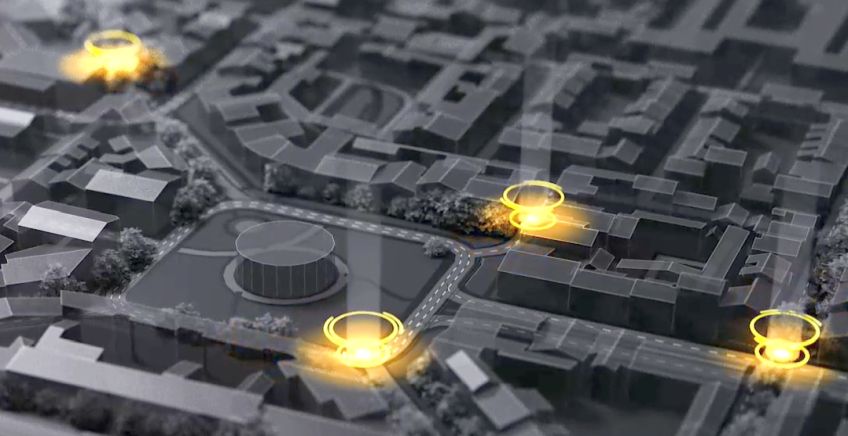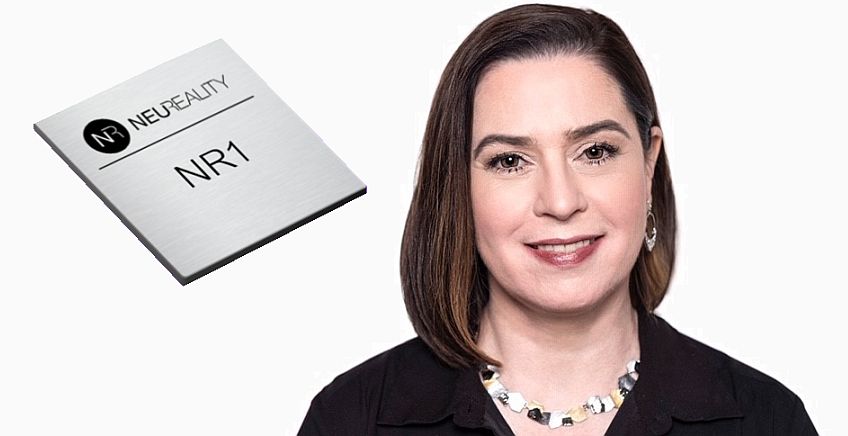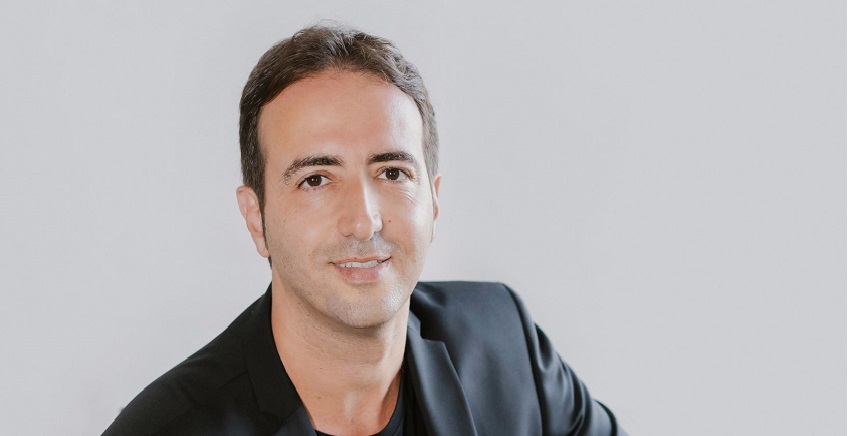Hailo Prepares for Mass Production of its AI Chips
1 August, 2019
The Tel Aviv based AI chip vendor is preparing to enter the automotive, IoT and smart city markets. Hailo's CEO, Orr Danon, revealed some of the company’s architectural secrets in an interview with Techtime
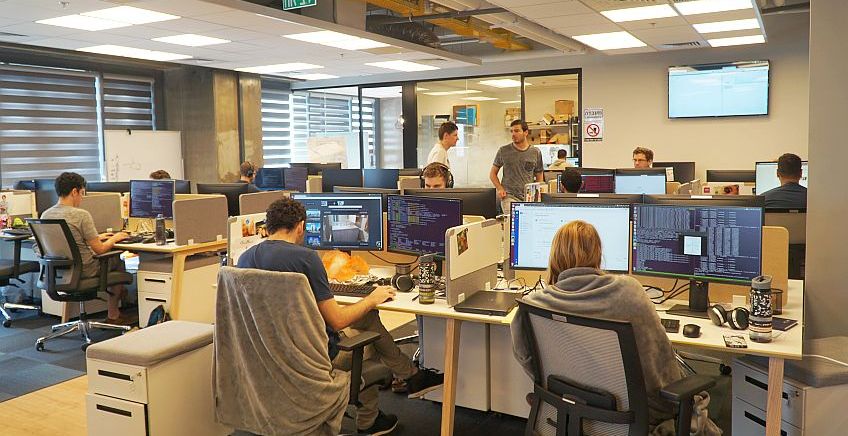
Photo above: A development team at Hailo. The Tel Aviv based company employs around 65 workers today
Tel Aviv-based Hailo is preparing for the mass production of its AI chip that meets the ASIL-B standard of the automotive industry, and start full-scale production during 2020. Company co-founder and CEO Orr Danon told Techtime that the new chip is named Hailo-8 and was developed as part of the cooperation between Hailo and auto manufacturers. The chip enables the meeting of demands for critical life-saving systems, including the meeting of working under conditions of up to 105 degrees Celsius.
According to company data, the Hailo-8 processor reaches up to 26 tera operations per second (TOPS) and 3 TOPS per Watt power efficiency. It will meet the strict ISO 26262 ASIL-B as well as the AEC Q 100 Grade 2 standards. Hailo-8 is comprised of four main components: an Image Signal Processor that improves the image from the sensor before its transfer for processing by the neural network core, an H.264 encoder that handles the video stream, an ARM-M4 processor that manages the chip, and the neural network core itself, that is comprised of a flexible matrix of software-configurable processing, controls, computational resources and memory units.
Renew the Old Idea of DFP Processors
Hailo was established in February 2017 by CEO Orr Danon, CTO Avi Baum and the Business Development Manager Hadar Zeitlin. The first investor in the company was Zohar Zisapel, who serves today as Chairman of the board. To date Hailo has raised around $24 million, of which $21 million was in the latest round of financing which was completed in January 2019. The company developed a new architecture for AI chips for edge devices that carry out the execution phase – i.e. the application of the inference of a neural network in edge devices at a rapid speed and with a huge saving in energy. According to Danon, the architecture, which is protected by dozens of pending patents, “belongs to a forgotten family of processors from the Data Flow Processors type.”
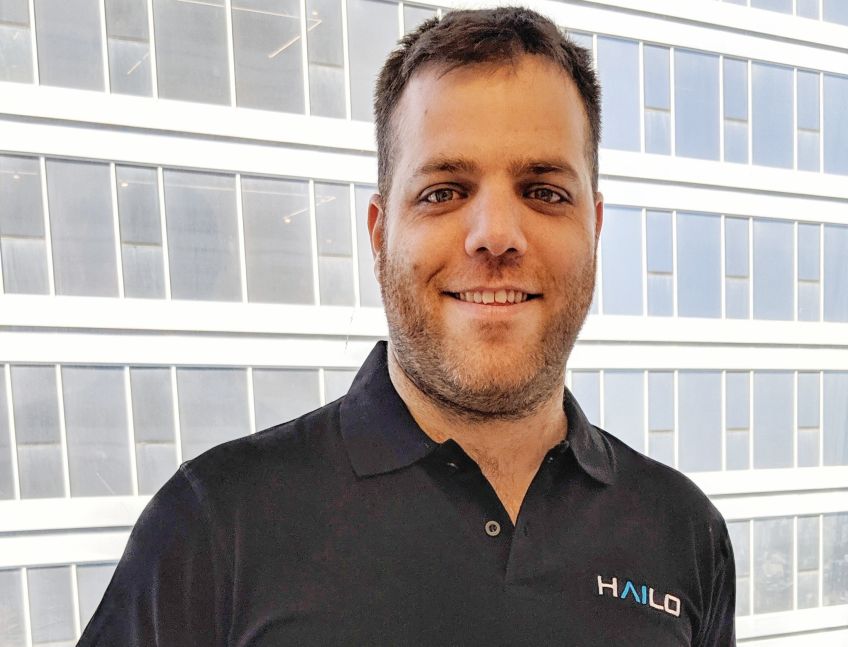
In DFP processors, the processing activity takes place only when data is fed into the processor, which conducts a fixed series of operations on top of this information, and then transfers the processed information. “In recent years, it turned out that the reliance on neural networks is an efficient and reliable means of solving many problems, and therefore most of the AI systems that we see in the market are based on neural networks. Here the challenge is structural, since the chip needs to implement a structure of a neural network. In a neural network one infuses experience into the description of a structure, and therefore it is a very efficient solution in solving problems which are based on recognizing examples.”
How is your chip designed? What are the main principles of the architecture?
Danon: “Our architecture describes the structure of the neural network and allocates resources to every layer in the network. We identified that in during the processing of inference, there were differences in the behavior of the various layers of the neural network, and therefore there was a need to provide them with different resources. This runs counter to our competitors, who use solutions such as GPU processors that allocate to each and every layer the same level of resources. Our development software learns the specific problem, characterizes it, and knows how to transfer to the chip instructions on how to manage the resources of each layer in an optimal method.”
What are the components of the chip?
“The idea is to use the memory units that are located very close to the processing units. We allocate memory and processing units in accordance with every task, and in this way achieve very fast processing, and extensive savings in the chip’s power consumption. This allows us to meet the extremely strict standards of the automotive industry, since the chip does not heat up and is capable of operating in the environmental temperatures that the industry demands.”
You claim that your chip is more efficient that other solutions in the market. However, there is no universally accepted means of measuring AI chips.
“We measure the performance of our chips by checking how many operations per Watt we execute a specific neural network. Nowadays there is the MLPerf consortium that is attempting to define a benchmark which will serve as a basis for comparing different deep learning processors. Regarding edge devices, the industry is apparently going in the direction of measuring the number of operations per Watt (TOPS/W) that the neural network carries out for a specific task, like an image.”
Today new methods are being developed for deceiving neural networks. How are you dealing with this problem?
“It is possible to relate to AI deception as a weakness, just as one relates to security vulnerabilities. At the outset, the weaknesses of the software systems surprised the industry, but gradually they found solutions. In the AI field, first of all this is a conceptual problem that lacks a solution on the silicon level. However, if the network was trained in the wrong way, and the attacker is aware of how the network was trained, then he is capable planning an attack. We also deal with this problem, and in principle it shows the advantage of installing AI systems at the edges of the network, since in this way there are less vulnerabilities along the route of transferring information.“
Hailo is growing quickly, and currently employs around 65 workers. The company is in the process of hiring additional manpower. Hailo is focusing its efforts on two key markets: the automotive and IoT. These two markets are expected to be huge and are also very demanding as in both there is a need for a product which is very reliable, low-cost, with very low power consumption. Danon: “In many respects the camera in a vehicle is no different than the IoT camera in a smart city. These are two areas that will be very dominant, and they share many common requirements.”
Posted in: AI , News , Semiconductors
Posted in tags: AI , semiconductors

